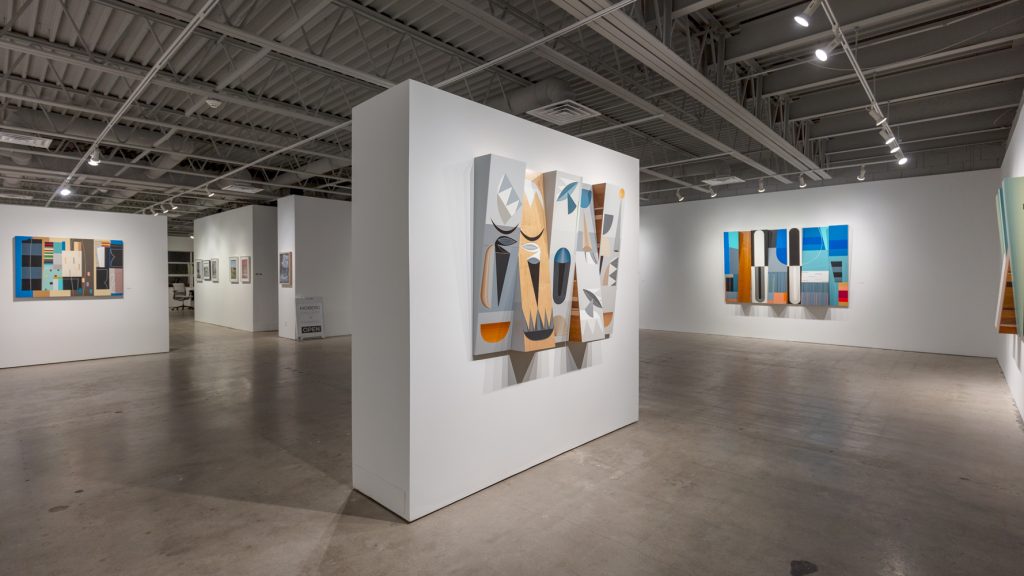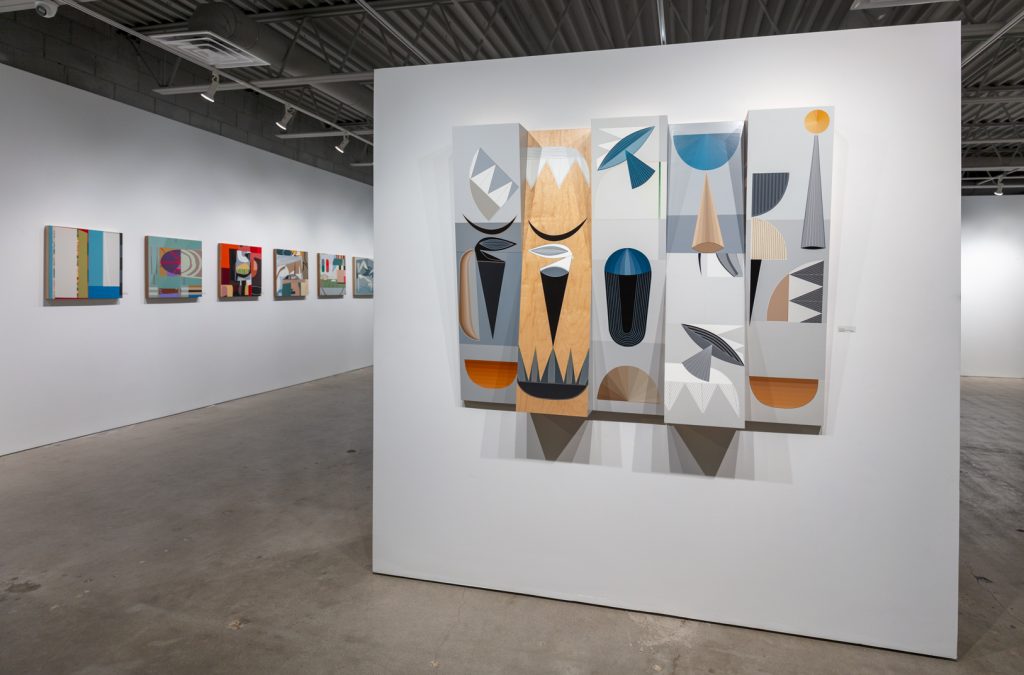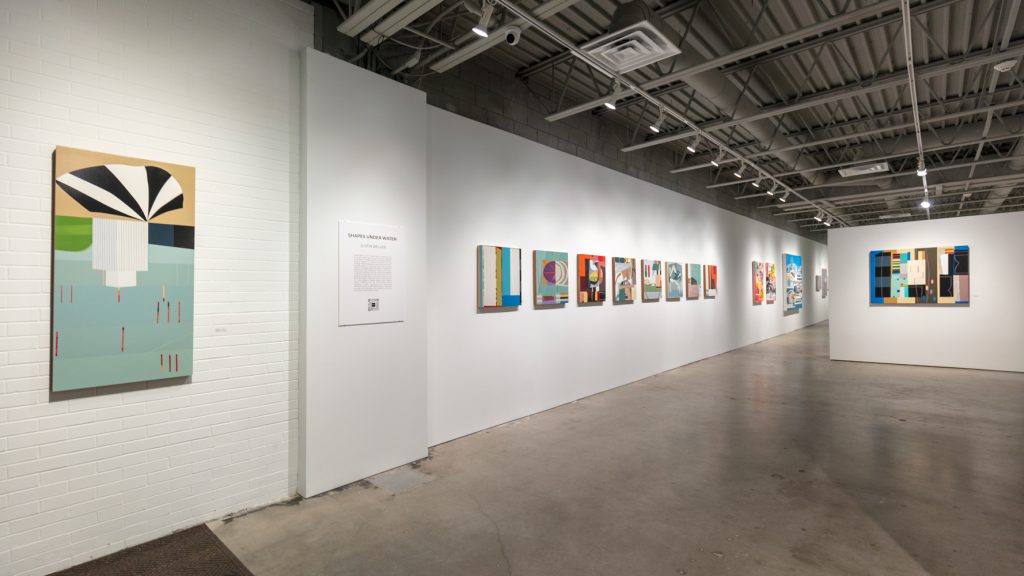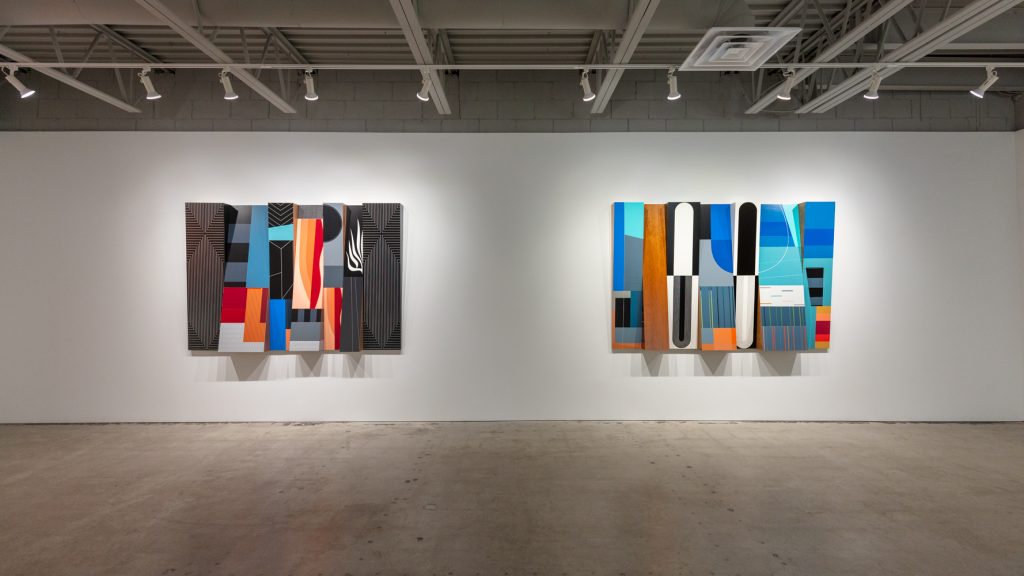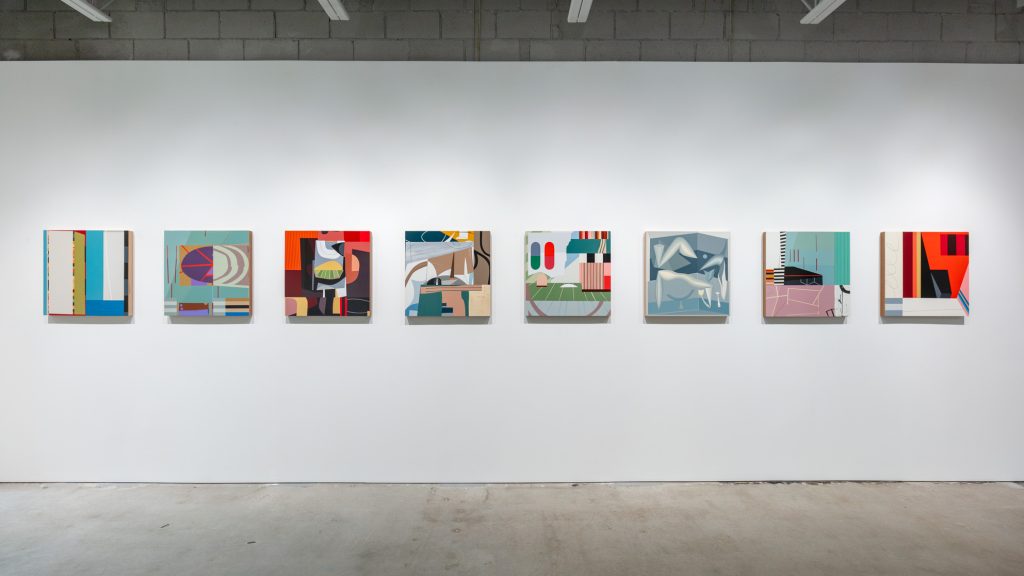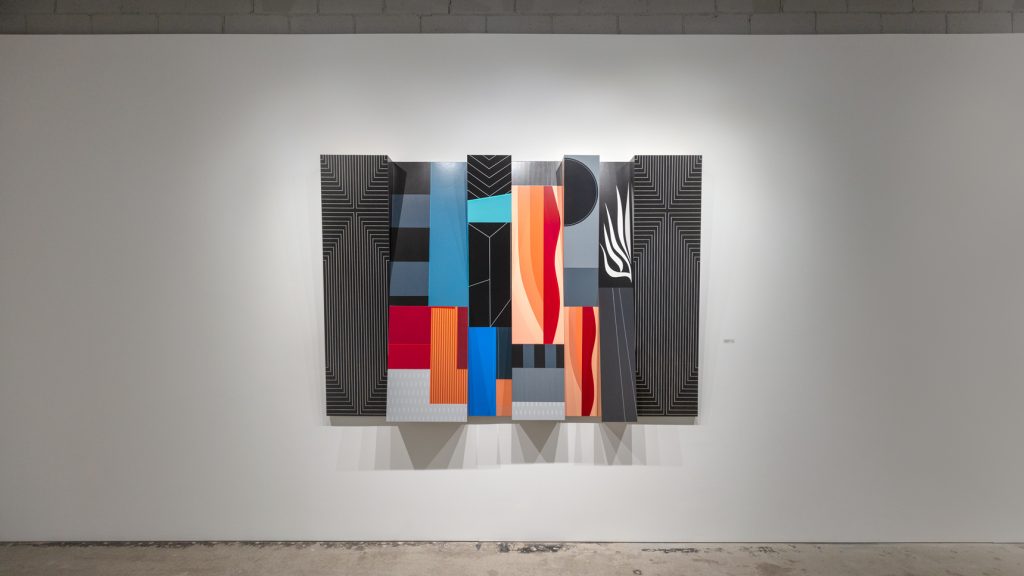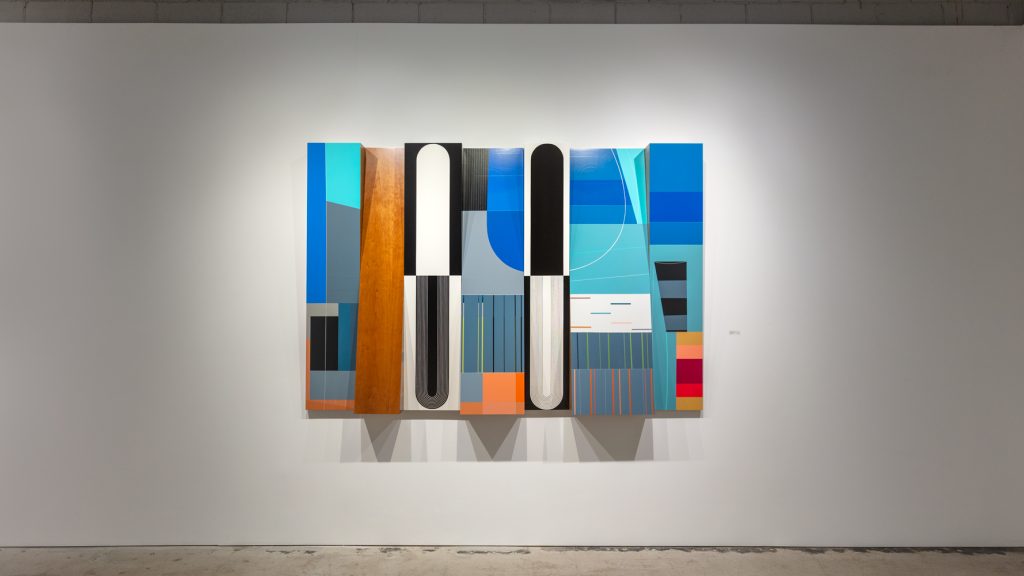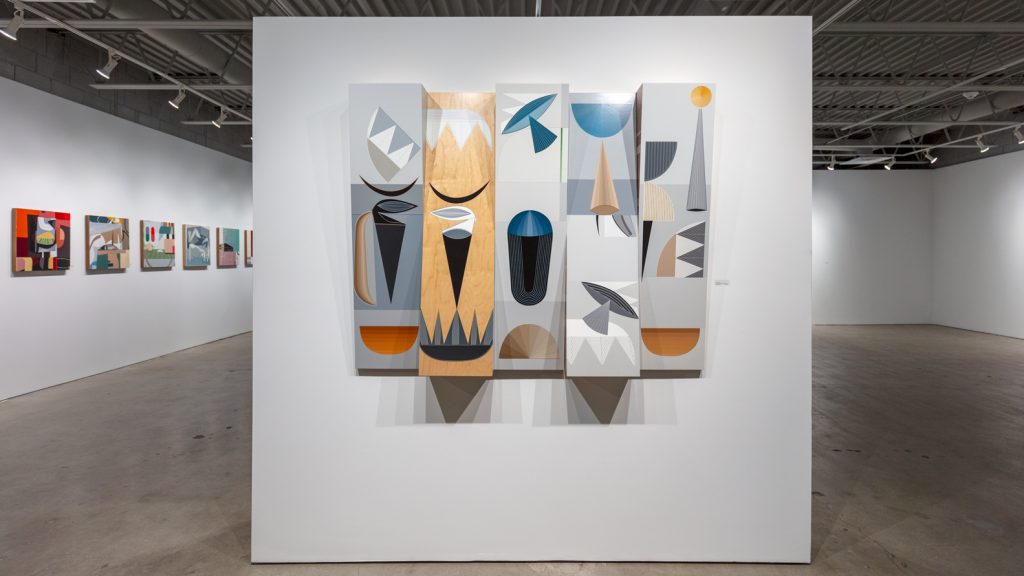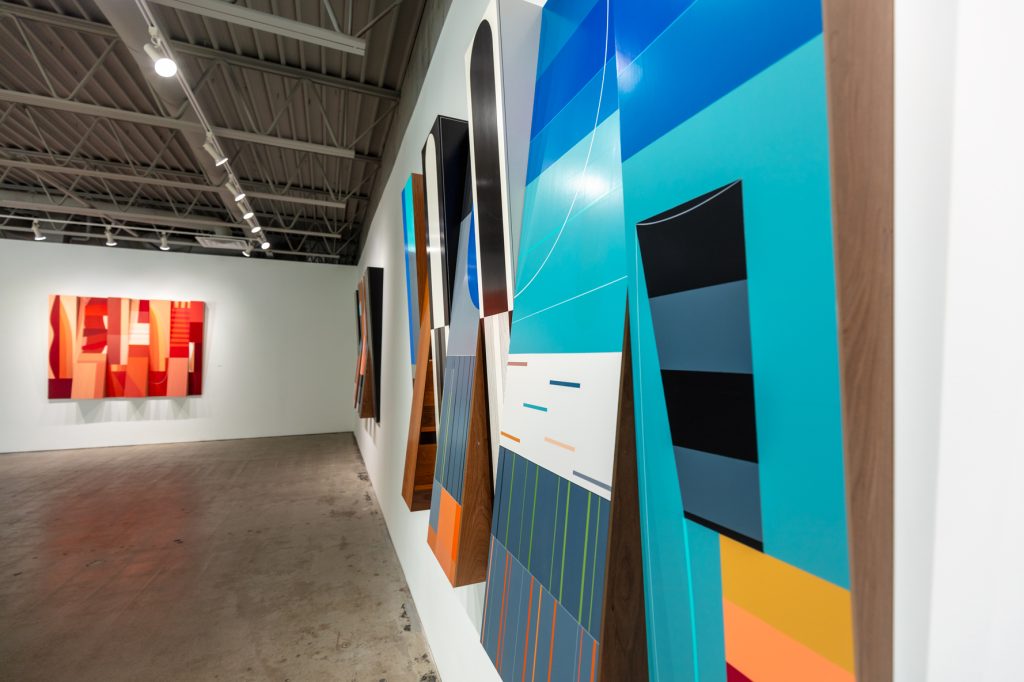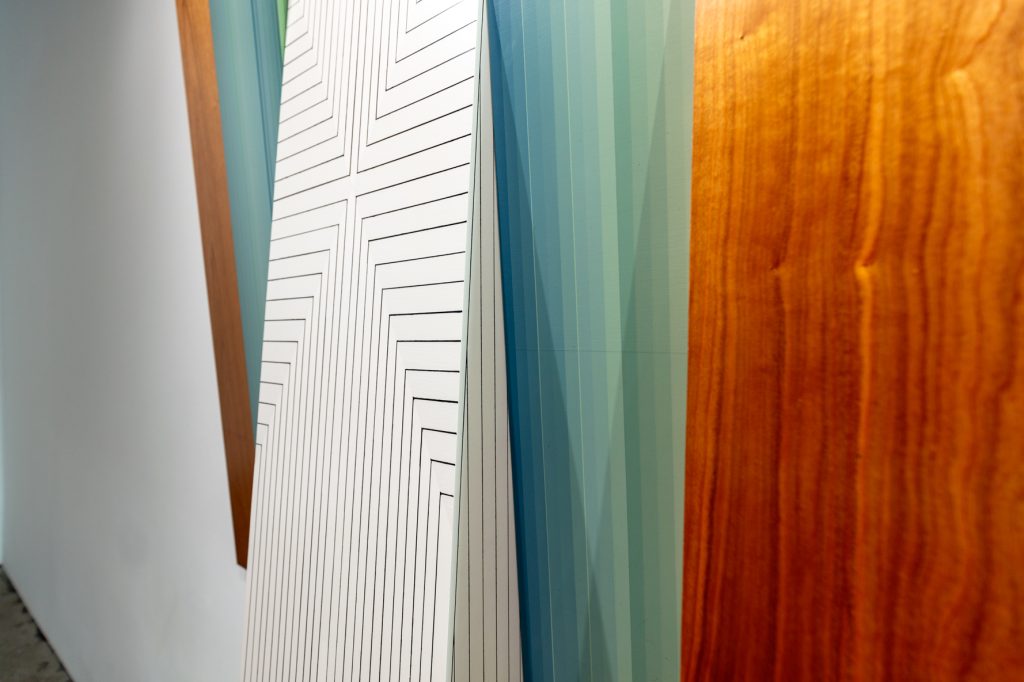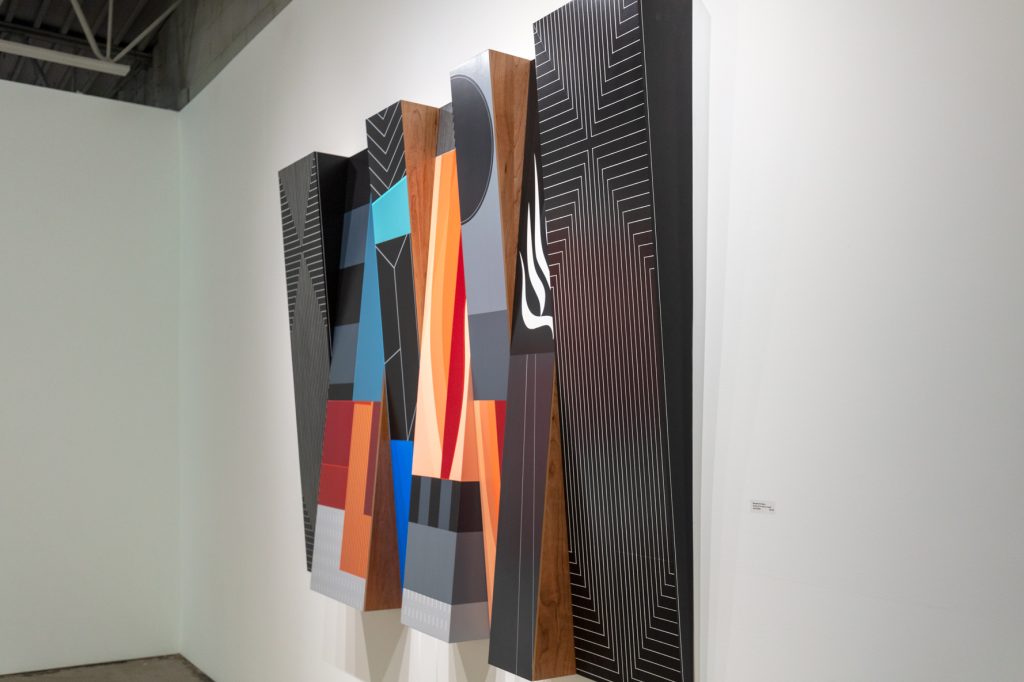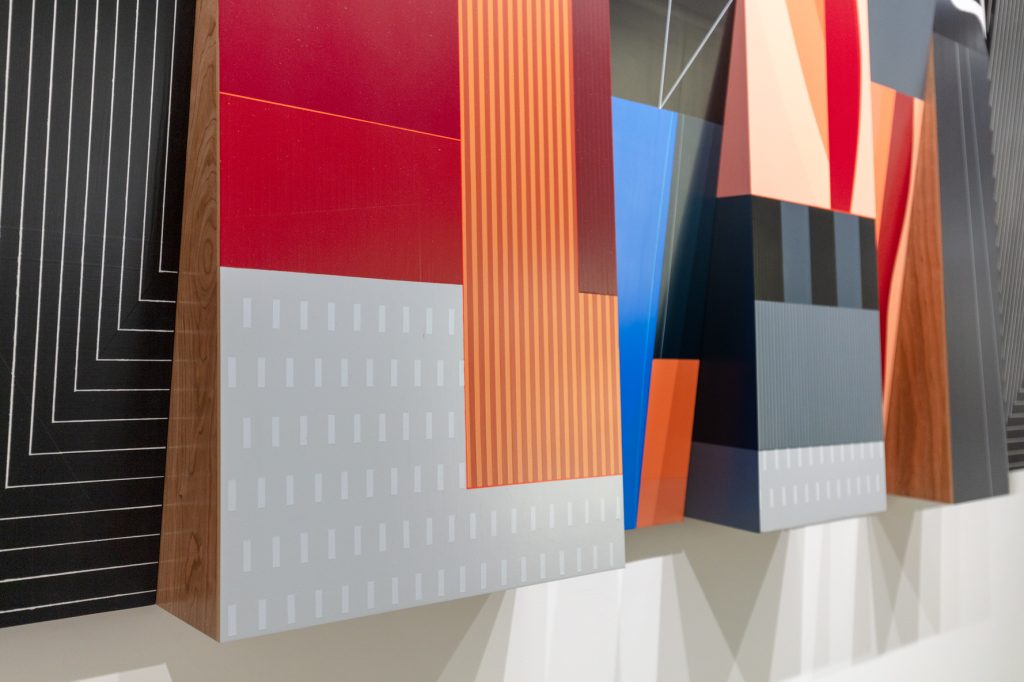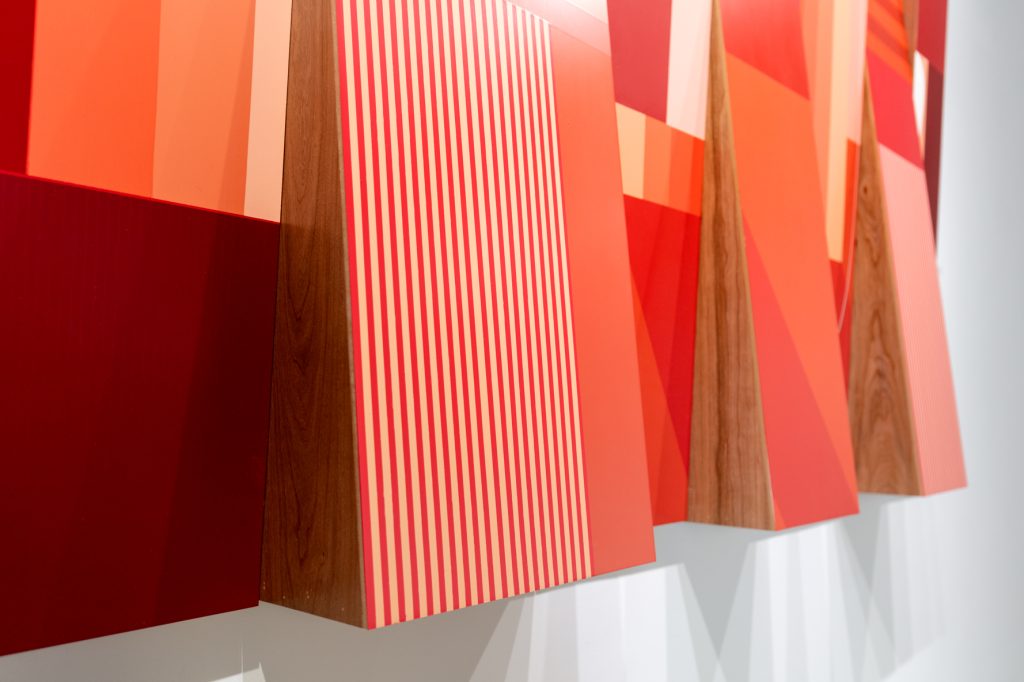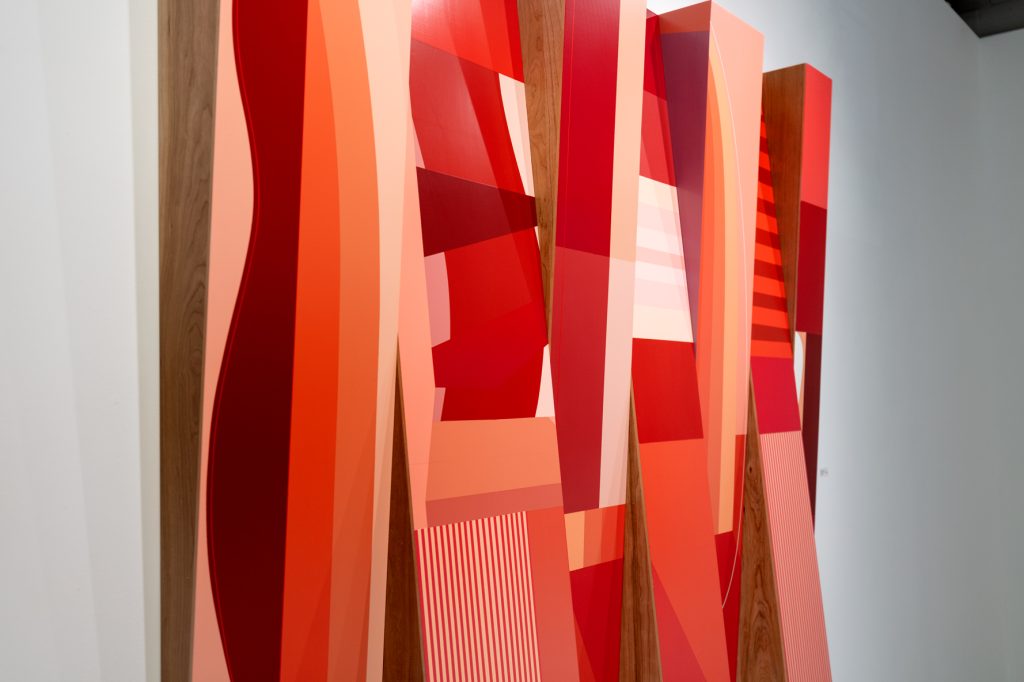TEXT BY MICHAELA MULLIN | VIEW IMAGES
Justin Beller | Shapes Under Water
Justin Beller is an intuitive artist, in keeping with his Zodiac water sign. His new artworks, large and small-scale, are testaments to a changing process. Moving beyond his original structures, he’s also making three-dimensional wall works and revisiting older pieces to incorporate them into renewed, cleaner, and edgier paintings. Beller is interested in evoking the natural feeling of shapes under water. These compositions find the vertical and abstract as perfect homes for the telling of stories that frequently emerge best in the linear realm of raw wood and paint. Controlled organic details led him to a new palette of greys, purples, and mauves, which, integrate with his more vibrant colors, invoking a fresh dynamism. The new-found elements strike a recalibrated balance in this body of work, still concerned with geometry, but also with lines in more altered states.
The musicality and rhythmic, along with the aquatic, can be found—seen and even heard—in Beller’s three-dimensional wall works. Think peddle, paddle, mbira and kalimba (African thumb pianos). These paintings act as mind-pianos—pushing, plucking a place in the framework, so the visual sounds come forward and pull away, creating a sonic-echo-silence cycle in our thoughts. Exposed raw wood on the sides intimates the natural world’s influence on movement.
Just as sound waves travel faster in water due to its density, the paintings and wall sculptures of Beller resound immediately, clear, even at a distance.
“Beneath the Waves” uses geometric repetition in white lines on black, interspersed with more organic shapes on the inside panels, as if being held together by math, but allowing the natural proclivity toward asymmetry to erupt through it. In “Fantasy Bubble”, red and peach tones dominate in tandem. And with the natural wood grain incorporated into “Some Day Blue,” the stained panels are more akin to earth’s “flesh” colors, and the horizontally bifurcated blue, black, and white capsules remind of the humanmade interjections.
“Seem” and “Crossroads” are also of more earth tones. “Seem” is a quiet meditation on color and mesmerizing lines, while “Crossroads” offers shape—lots and lots of shapes. Stacked circles on cones, mushroom-shapes that fly with discus tops, shapes that could be drummed, fans, and cylindrical images topped with domes.
The large-scale two-dimensional paintings, “Distant View,” “Shapes Amidst the Current” and “Ballet of the Deep” are the works in the exhibit which reside between the three-dimensional wall works and the square paintings—they expand to hold more but maintain their double dimensionality. “Distant View” stands out as a single vertical panel that plays with the XY axis and gives us horizon, but in a lean, long framing. There’s a short width of horizon, but it is distant. The parachute shape in black and white floats low above the water, just meeting the corner of a basic but monumental structure.
Beller’s smaller square paintings on panel, at 24 x 24 inches each, explore scapes—land, air, and sea. But the sea, here, is still the predominant carrier of story and meaning. “Blue Energy” evokes water most immediately, with dissected and exaggerated forms, which are two augmentations we know water does to subject and object when in and under it. There is a layering in “Shapes in the Abyss” which is more noticeable, with what appear as “blocking” sound panels—absorbing, aborting, that which may have traveled far over the water but for the rectilinear obstacles. This creates a window through which one can see a horizon, but also feel the nearness of the vertical lines, making a tension reminiscent of being inside and looking out.
Beller transitions the eyes, mind and whole body with “Demeter” and “Fundament.” The Greek god, Demeter, presides over earth’s fertility. And the fundament acts as a foundational core of the planet, which is mostly water—of the oceans, in the air, in the ground soil, and in us. And like sound, water is always moving. The thin lines in this painting, in the lower half of the frame, work like small but plentiful cracks. The upper section is still held in it busy and full forms, but the lines beneath in their mauve space are what the eyes can’t avoid.
“Sound Wave,” is a wildly vocal painting, with a beetle-shaped subject, which also appears, in part, as a music venue seating floor plan. The axis of X and Y here conjure compression and rarefaction of the sonics of living. And “Whispers”—this painting enjoys the titular association of quiet words on the air. But what happens under water? It is an action that can’t be done—or received. The composed color blocks are reminiscent of an interior space, a room. But then the eye wonders if the aerial view is a better messenger of such small sound. There is a small fish-bone type moment, center left. These curved line throughout the show act as ripples, waves—of water and sound.
The painting that appears the most domestic, with an even more pristine delineation of space, making a landscape with architectural forms, is “Tic Tac.” Repeating the capsule shape here, cut at the midriff by a line, there is an invocation of pharmaceuticals (so much more intriguing than swallowing a Damien Hirst pill). Color butts color, not vying for compositional space, but ensuring the contiguity of Beller’s intuitive and controlled choices.
The new schemas Beller has integrated into this process have invigorated his work, his lines and palette, and thus, the aura they create.
Don’t miss Shapes Under Water, on view through Saturday, March 2.


